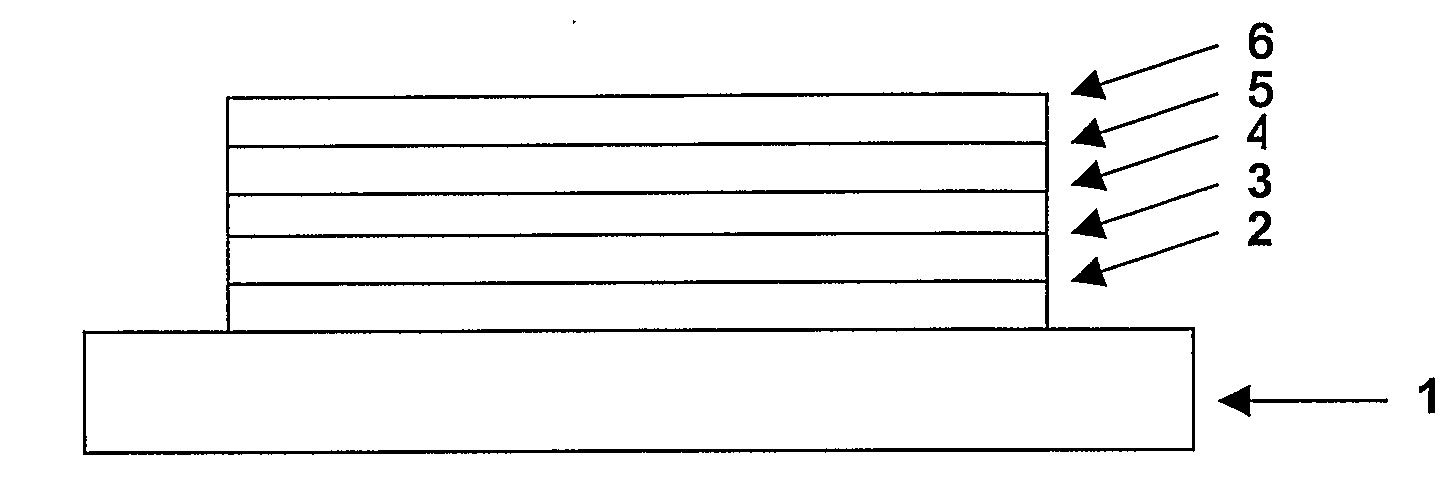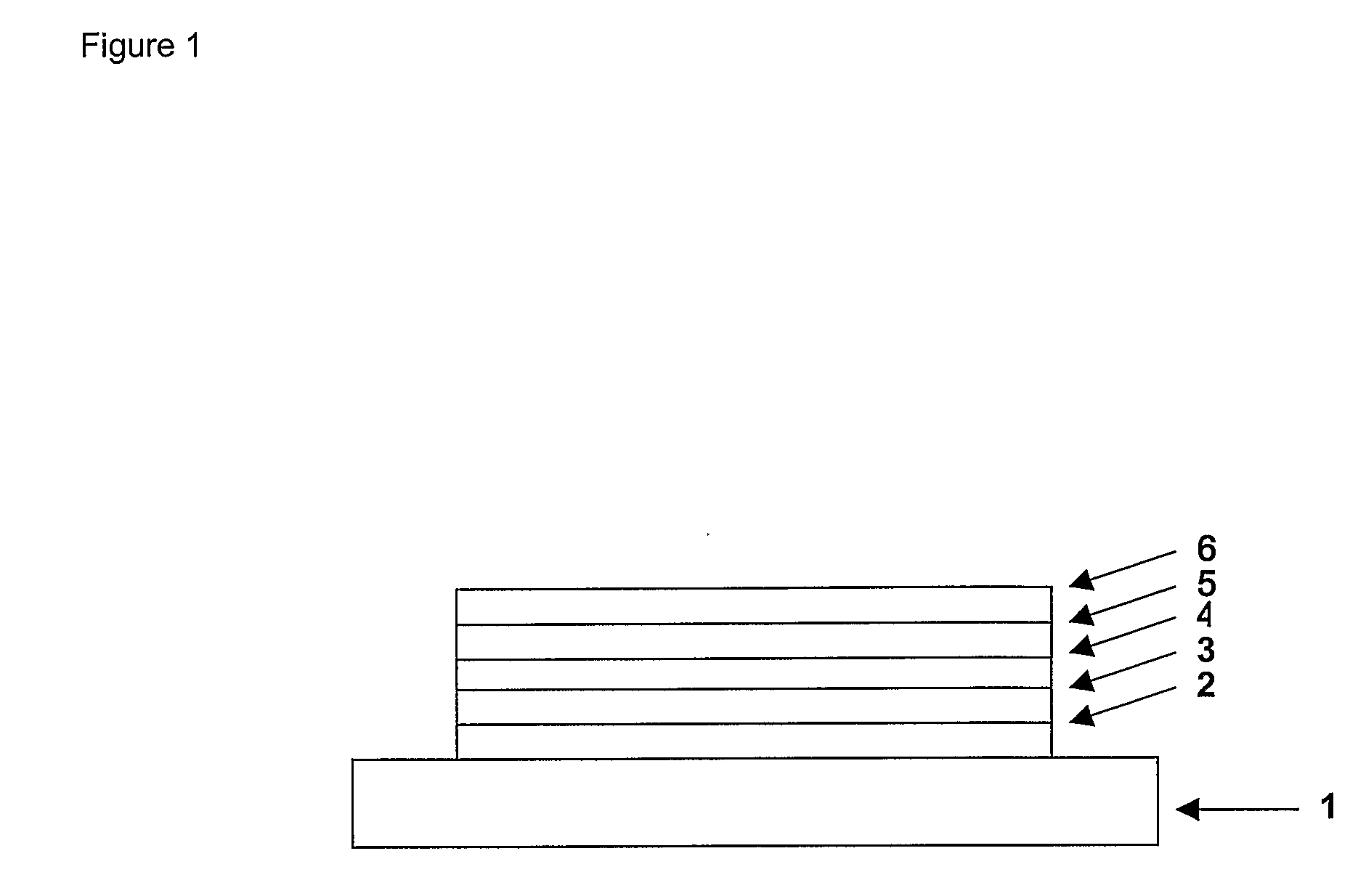Optical device comprising a charge transport layer of insoluble organic material and method for the production thereof
- Summary
- Abstract
- Description
- Claims
- Application Information
AI Technical Summary
Benefits of technology
Problems solved by technology
Method used
Image
Examples
example 1
[0131]The general procedure above was followed using an electroluminescent layer comprising:[0132]a host polymer having the composition 70% 9,9-dioctylfluorene-2,7-diyl, 10% 9,9-diphenylfluorene-2,7-diyl, 10% “TFB” repeat unit and 10% “PFB” repeat unit as disclosed in WO 02 / 92723 (TFB and PFB repeat units are illustrated below). The polymer was prepared by Suzuki polymerisation as disclosed in, for example, WO 00 / 53656.
[0133]the red phosphorescent dopant platinum octaethylporphine (PtOEP) as disclosed in Nature (London), 1998, 395, 151.
[0134]The host:dopant ratio was 98.8:1.2.
[0135]The hole transporting layer was subjected to heat treatment at 130° C. for 10 minutes prior to deposition of the electroluminescent layer.
example 2
[0137]A device was made in accordance with Example 1 except that the host:dopant ratio was 98.0:2.0.
example 3
[0139]A device was made in accordance with Example 1 except that the electroluminescent layer consisted of host material CBP and the green electroluminescent dendrimer dopant ED1, disclosed in WO 02 / 066552 and illustrated below, deposited by spin-coating from a chloroform solution having a CBP:ED1 ratio of 8:2.
PUM
| Property | Measurement | Unit |
|---|---|---|
| Electric charge | aaaaa | aaaaa |
| Electrical conductor | aaaaa | aaaaa |
| Phosphorescence quantum yield | aaaaa | aaaaa |
Abstract
Description
Claims
Application Information
 Login to View More
Login to View More - R&D
- Intellectual Property
- Life Sciences
- Materials
- Tech Scout
- Unparalleled Data Quality
- Higher Quality Content
- 60% Fewer Hallucinations
Browse by: Latest US Patents, China's latest patents, Technical Efficacy Thesaurus, Application Domain, Technology Topic, Popular Technical Reports.
© 2025 PatSnap. All rights reserved.Legal|Privacy policy|Modern Slavery Act Transparency Statement|Sitemap|About US| Contact US: help@patsnap.com



